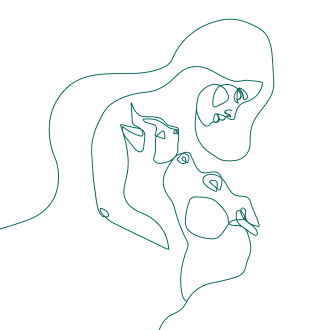About Cats
I am sniffing you carefully. All about scent communication in dogs
Dec 20, 2021
What is olfactory communication, what do dogs get to know about the world through their sense of smell, interesting facts about the abilities dogs have thanks to their nose.
Let us talk about the way dogs perceive and analyze the world. We will never fully understand how they do this, simply because we do not possess the same abilities. This is the world of scents.
Dogs have an amazing ability to accurately locate a scent and break it down into its components. They can do this because they have 30 percent more receptors than a human does. Such abilities make these animals our reliable and irreplaceable helpers. For example, in police work and search-and-rescue parties.
But everything has to be paid for. And this ability has an aspect that is almost never taken into account by anyone. We figured out how to use a dog's nose for our own purposes, but we stubbornly underestimate the importance of the task, which made this ability actually appear. It is referred to the task of getting essential information about the environment using the sense of smell.
This is olfactory communication and another way for dogs to communicate. It involves the transmission of contextual and social information through saliva, urine, feces, and the body’s scent glands.
Familiarity with and exchange of information with familiar and not so familiar individuals occur during direct contact or through marking the environment, which is hugely important. Dogs can obtain information about each other without risk of physical conflict, potentially threatening health and life.
What information is this:
- Reproductive status: is a suitable bitch about to come into season?
- Order: there may be someone in the area to avoid meeting
- Territory ownership: when entering a location with a large number of resources, local animals will behave much more aggressively, and it is better to decide carefully whether to do so
- Location and health conditions of potential victims
What your dog can do to sort out or leave information about itself:
- Studying of marks. This can often look quite odd. The dog begins to shake its jowls, its stare becomes vacant and in fact it looks rather silly. This is called the “Flehmen” response.
- Leaving its scent next to or directly on the mark.
- Scratching the ground nearby to add the scent of the interdigital glands and leave a visual cue: "Go and sniff there.” Yes, yes, this is not about burying at all.
- Defecation, during which extra secretion is excreted from the paranal glands.
- Gnawing and licking objects. In this case, the dog leaves a visual and scent cue with the help of saliva.
- Attempts to rub its body and muzzle. The smell of the secretions from their glands can make them feel more comfortable in that place.
As you can see, we have almost none of this information. Should we be surprised that some dogs start to get excited or anxious in the street for no reason at all? After all, there is much more information than we can fix.
When meeting other dogs, the analysis is no less fundamental, if close contact is possible. Sniffing of:
- Face, ears and neck
- Groin area
- Anal area
And when everything has already been "read", they can proceed to interact or simply just leave, if the individual did not turn out to be interesting enough.
There is some evidence that the dogs studied had a faster pulse, showed noticeable stress signals and mostly used their right nostril, when sniffing the scents of paranal, interdigital and salivary secretions of an animal that had recently experienced a negative event, was in isolation or worried for various reasons.
However, when sniffing the scent of a human who experienced fear, the dogs mostly used their left nostril, which is quite interesting. This allows us to make an assumption that information contained in different scent signals is analyzed and transmitted via different pathways and can lead to different emotional states.
And a few more amazing abilities that our dog has thanks to its admirable nose and which may have effect on relations with others:
- Dogs can easily distinguish the smells of twins who live together.
- Their nose picks up the metabolic changes in their owners: fear, joy, illness.
- The association between the smell of a human and experience related to this human is rapidly established: the smell of sweat from a vet can increase excitation and remind the dog of emotions experienced at a previous appointment, and the smells of familiar people — the anticipation of positive interactions and rewards, including social ones.
- Most likely, different parts of a human’s body smell different and provide different information because dogs are more interested in the face, arms and legs during olfactory analysis.
Olfactory communication has been studied very little up to now, and I am sure, we will learn a lot more as new research is conducted. So, don’t think that you know your dog inside out.




